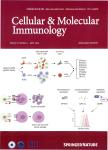Differential ligand binding/trafficking for distinct CTLA-4 fates: is it an expandable mechanism?
作者机构:Department of PharmacyResearch Institute of Pharmaceutical SciencesCollege of PharmacySeoul National UniversitySeoul08826Republic of Korea
出 版 物:《Cellular & Molecular Immunology》 (中国免疫学杂志(英文版))
年 卷 期:2023年第20卷第1期
页 面:1-2页
核心收录:
学科分类:1001[医学-基础医学(可授医学、理学学位)] 100102[医学-免疫学] 10[医学]
摘 要:In a recent issue of Nature Immunology,Kennedy et *** that CTLA-4(CD152)differentially targets two distinct ligands,CD80 and CD86,on antigen-presenting cells(APCs)for destruction or recycling following transendocytosis(TE),resulting in separate fates for CTLA-4 on T_(reg) cells and thereby regulating ***,whereas CTLA-4 tightly binds CD80 for TE and causes ubiquitination and trafficking to late endosomes and lysosomes for degradation,CTLA-4 weakly binds CD86 for TE,resulting in dissociation under acidic conditions(pH6)and recycling of CTLA-4 to the plasma membrane for further CD86 ***,CD86 targeting by CTLA-4 regulates T-cell function in autoimmunity[1]and presumably immune surveillance of cancer cells(Fig.1).



